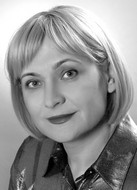Sporting activity values and senses: classification attempt
Фотографии:
ˑ:
Teoriya i praktika fizicheskoy kultury №12 2017, pp.97-99
Dr.Sc.Philos., Professor E.N. Yarkova1
Dr.Sc.Soc., Professor G.M. Zabolotnaya1
1Tyumen State University, Tyumen
The article considers the modern sports activity values and senses in the context of the modern sport axiology that, in our opinion, offers promising avenues for research still underexplored by the modern national science. The study subject is highly relevant in view of the ambiguous role played by sports in the modern world. We offer a typing system of our own design to develop a typology of basic sports activity values, with the typing system being based on the individual and social attitudes to sports in particular reflective of the general attitudes to the modern world on the whole. The analysis makes it possible to classify the sports activity values into the following three domains: traditionalism that puts every sports activity within the frame of existing traditions; utilitarian domain (utilitarism) that considers every sports activity driven by its utility or consumption aspects; and creative domain (creativism) that considers every sporting activity from a creative viewpoint, with an equal and constructive dialogue being established as a key principle of its self-management. The proposed frame typology may be considered and applied as a research tool to analyse the sporting life of any society. The research data generated by the typing model may be applied to warn about and prevent potential destructive trends in one or another sector of the sporting life and find solutions to its developmental problems.
Keywords: sports activity, values, traditionalism, utalitarism, creativism.
References
- Egorov A.G., Zakharov M.A. Feyr Pley v sovremennom sporte [Fair Play in modern sports]. Smolensk: SSAPCST, SSU publ., 2006, 186 p.
- Saraf M.Y. Sport v kulture XX veka (stanovlenie i tendentsii razvitiya) [Sport in the culture of the XX century (formation and development trends)]. Teoriya i praktika fiz. kultury, 1997, no. 7, pp. 5-12.



